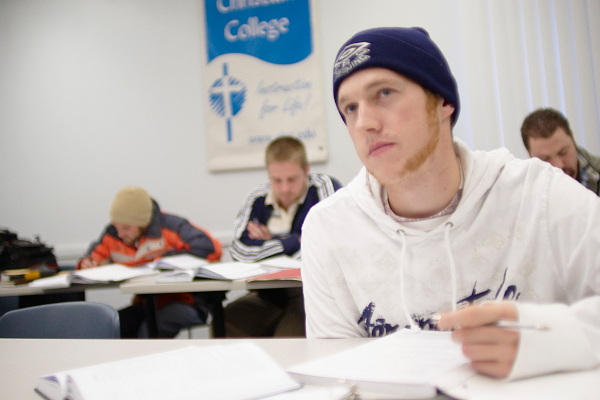As you explore colleges and options, there are many things to consider. Location, price, degrees, programs, and amenities are just a few. There will naturally be things that are important to you or "must haves" and other things you could take or leave--or maybe haven't even thought about.

As you participate in college tours and conduct research you will come across the term "student-to-faculty ratio." What does this mean exactly and why is it important?
Simply put, it means "how many students are enrolled at a school compared to how many faculty members have been hired."
Many colleges and universities tout this number as something they hope you will like. Much like your blood pressure reading, it doesn't mean much if you don't know what each number actually means in relation to YOUR college experience.
The size of the college campus is also a good indication of student-to-faculty ratio.
Large campus = high ratio (less individualized attention)
Smaller campus = lower ratio (more personalized experience)
What is a good student-to-faculty ratio?
According to Best Value Schools, a good student-to-faculty ratio in U.S. Colleges and universities would meet or exceed the national average of 18 students per faculty member, calculated by the National Center for Educational Statistics.
To be clear, this doesn't translate to individual classes (18 students to 1 teacher) but overall student body to overall faculty. However, in each case, classroom or campus, we believe the lower the number the better. Why?
Individual attention and access to help.
Great Lakes Christian College has a 12:1 student-to-faculty ratio.
As you can see this is quite lower than the national standard for a good ratio, which means our students get exceptional individualized attention.
Student-to-faculty ratio and campus culture
The student-to-faculty ratio of any particular institution can tell you a lot about the culture there.
For example:
- Schools with higher ratios tent to have more students.
- More students usually means larger class sizes.
- Lower ratios means more accountability.
- Large colleges and universities often have more degree programs.
- Large universities may also attract renowned professors and lecturers.
- Large universities may have state-of-the-art facilities and world-class athletics programs.
- Smaller colleges often have less competition for admissions and scholarships.
- Smaller colleges provide a close-knit community and more personal and emotional support.
If you are trying to choose between a large university and a smaller college that both have the degree you are interested in, student-to-faculty ratio should be a big part of your decision.
How important is a low student-to-faculty ratio to you?
Assessing your learning style will help determine how much a student-to-faculty ratio will matter to you.
Low student-to-faculty ratio often means that you get more one-on-one time with your instructors. Students at schools with small ratios tend to receive a lot of individualized attention and hands-on learning experiences.
Do you want to be able to have lunch with your professor?
Do you hope you can form long lasting relationships with your peers and professors?
Do you hope to find a mentor during college?
Do you like to learn by collaboration and discussion?
These are some advantages to a smaller student-to-faculty ratio.
If you attend a really large university, the majority of your classes will be taught in large lecture halls that can hold 100, 200, or even 300 students. Often these classes are taught by Teacher Assistants (TAs) and you might not ever meet the actual professor.
There is nothing wrong this type of experience. It just might not be right for you.
How to Decide
For each school you decide to apply to, make sure you visit the campuses. This is really the only way to get a feel for the culture. You may find that a campus is too big (or too small) for your preference when you see it in person.
Talk with the admissions director. Ask about life on campus, class size and structure, the food in the cafeteria. Make sure you tour a dorm and see what the rooms are like. Talk to the students. Sit in on a class. Check it all out!
If sports is important to you, either as a fan or as an athlete, school size will make a difference. Larger schools typically have more sports at higher levels. Smaller schools typically specialize in a few sports, at lower levels of competition. The good news here is that it may be easier to get on a team and qualify for a scholarship at a smaller school. Unless you are a super star athlete with scouts fighting for your attention--a smaller school will offer you more opportunity to play.
The Wrap Up
Student-to-faculty ratios determine the kind of in-class and academic experience you will have. Figure out what type of learner you are and what type of environment you will succeed the best in. Visit the campuses and meet people. College is one of the best times in your life. Don't make the decision lightly. Make it with the right information and priorities.
You Won't Get Lost in The Crowed at GLCC
At Great Lakes Christian College, we are a private Christian college that treats everyone like family. See the difference GLCC can make. Call 1-800-YES-GLCC or schedule a personal visit. Better yet, apply today!
This article was first published in 2018 and has been updated recently.





